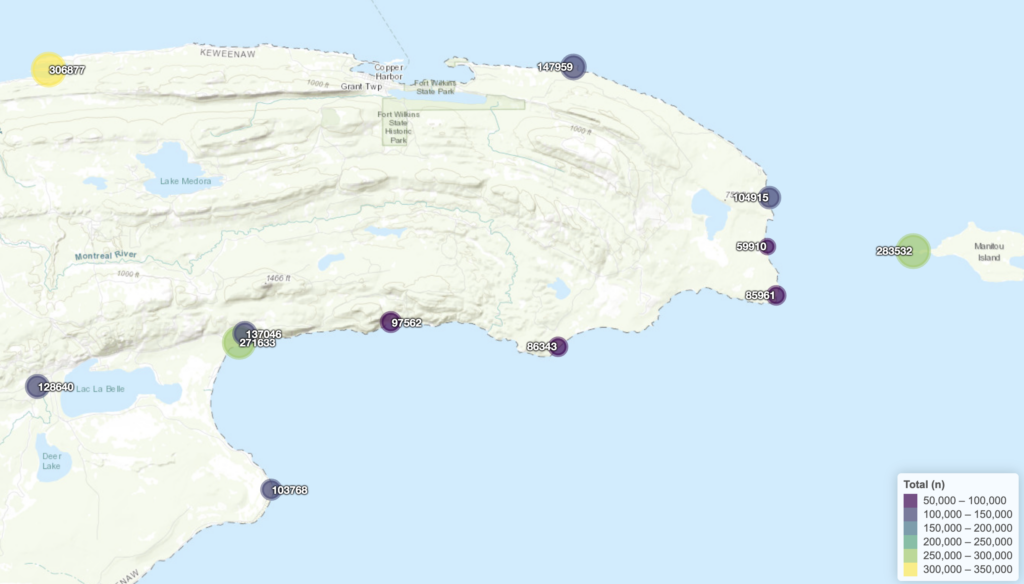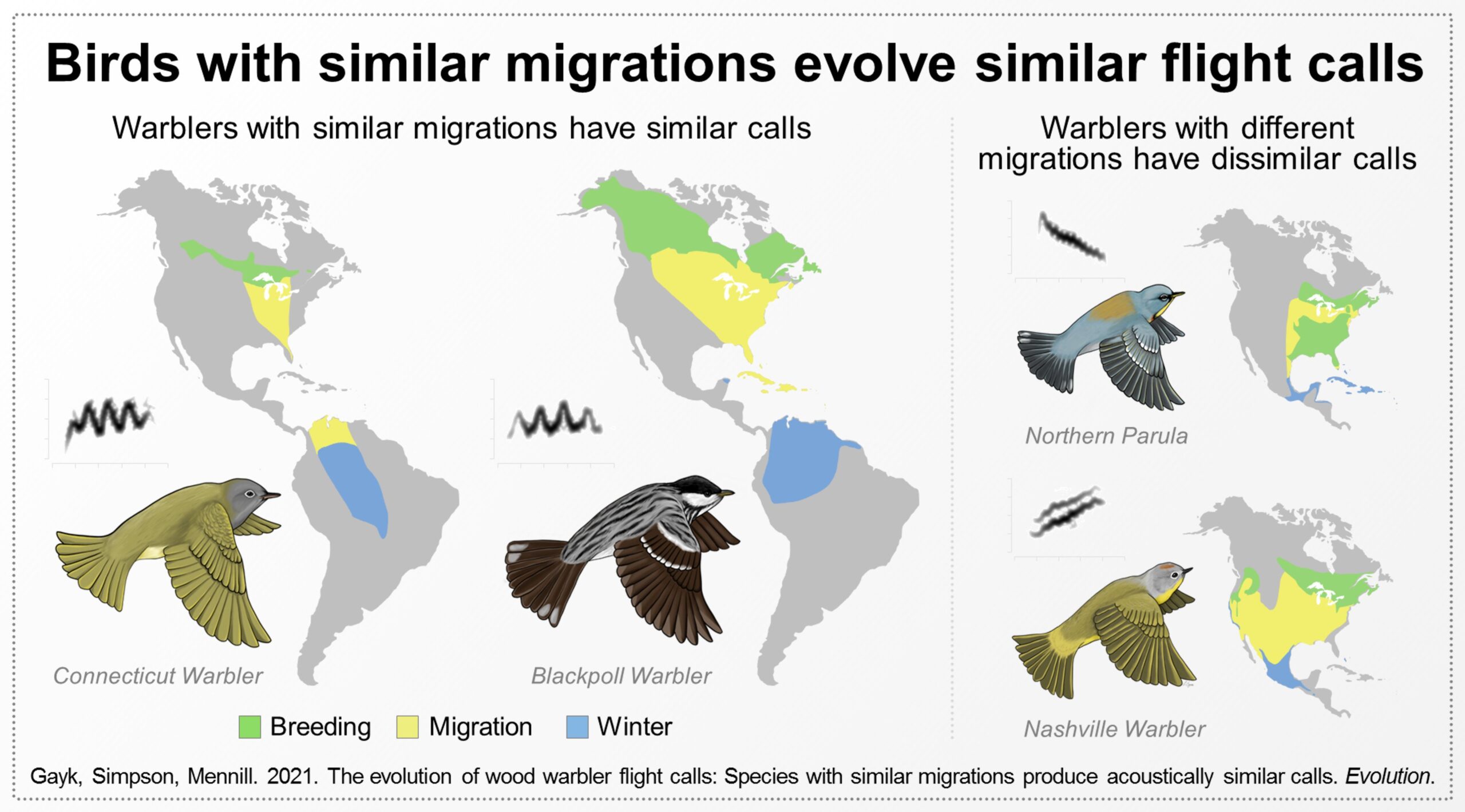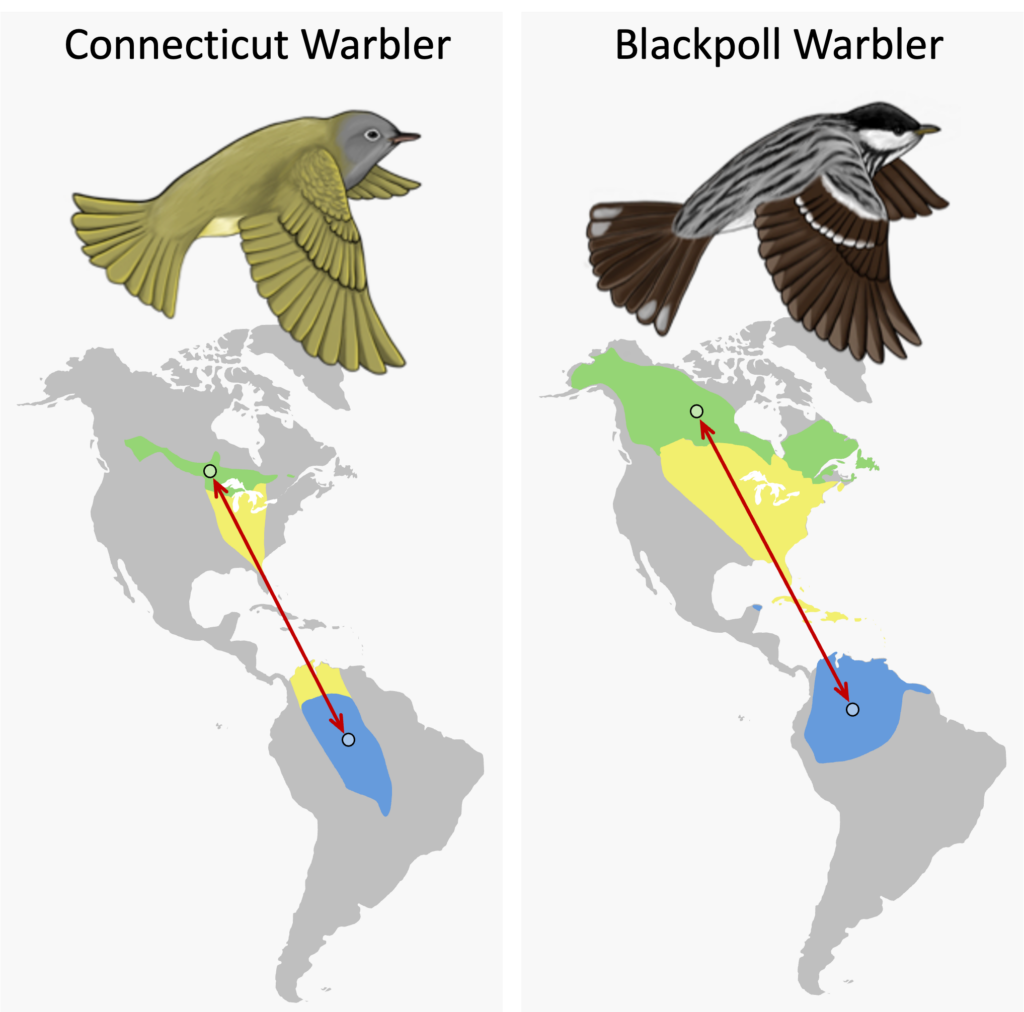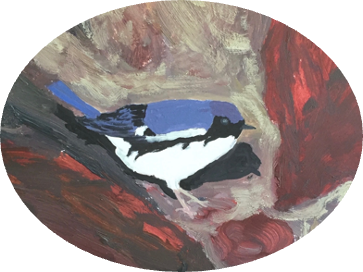Dr. Zach G. Gayk’s research is currently focused on three main themes:
Lake Superior, weather, geography, and reoriented diurnal songbird migration
In collaboration with Dr. Benjamin Van Doren, we are using a machine-learning classifier to understand the influence of weather and geography on reoriented migrations of songbird at 12 sites along a large flyway in the Keweenaw Peninsula, Michigan. This research is ongoing with ~1.7 million flight call detections of 110 taxonomic classes in 2022-2023.

In-flight ecology of actively-migrating songbirds and the role flight calls may play in organizing groups of active migrants.
We are currently working to understand how actively migrating songbirds use flight calls, the role flight calls play in migration, and how we can use flight calls to examine networks of co-migrating species. This research is ongoing at several spatial scales, from examining how small groups of migrants in morning flight associate, to examining which species co-occur non-randomly in datasets at large spatial scales (in collaboration with Dr. Benjamin Van Doren).

Relevant Publications: Zach G. Gayk, Daniel J. Mennill. 2023. Acoustic similarity of flight calls corresponds with the composition and structure of mixed-species flocks of migrating birds: evidence from a three-dimensional microphone array. Phil. Trans. R. Soc.

Zach G. Gayk, Richard K. Simpson, Daniel J. Mennill. 2021. The evolution of wood warbler flight calls: Species with similar migrations produce acoustically similar calls, Evolution, Volume 75, Issue 3.
Microphone arrays, triangulating birds in flight, and calibrated estimates of migratory passage
We are interested in using flight call datasets to produce refined estimates of the total migrants passing, which would be valuable for migration monitoring. Currently, avian flight call monitoring suffers from an inability to precisely determine the number of birds passing, as birds may call more than once, and calling rate varies with environmental and social conditions. Using 3D microphone arrays to triangulate birds in flight, we can examine the relationship between calling rate, total number of birds, and environmental condition to produce calibrated estimates of migratory passage which can be applied to flight call monitoring.

Relevant Publications: Zach G. Gayk & Daniel J. Mennill. 2020. Pinpointing the position of flying songbirds with a wireless microphone array: three-dimensional triangulation of warblers on the wing, Bioacoustics, 29:4, 375-386.
Future Research Interests
We are very interested in advancing identification of avian flight calls at the species level for multiple species, as this will further enhance the ability to monitor individual species migration routes, population trends, and the influence of climate change on phenology. As our ability to monitor migrants improves, we envision large scale acoustic monitoring in continent-wide networks of recorders, which will use classification models to display results on publicly-available websites in near real-time. If continent-wide flight-call monitoring could be established, this would revolutionize the way we envision the migrations of migratory birds, leading to precise estimates of migratory passage for each species, and many downstream conversation implications.

